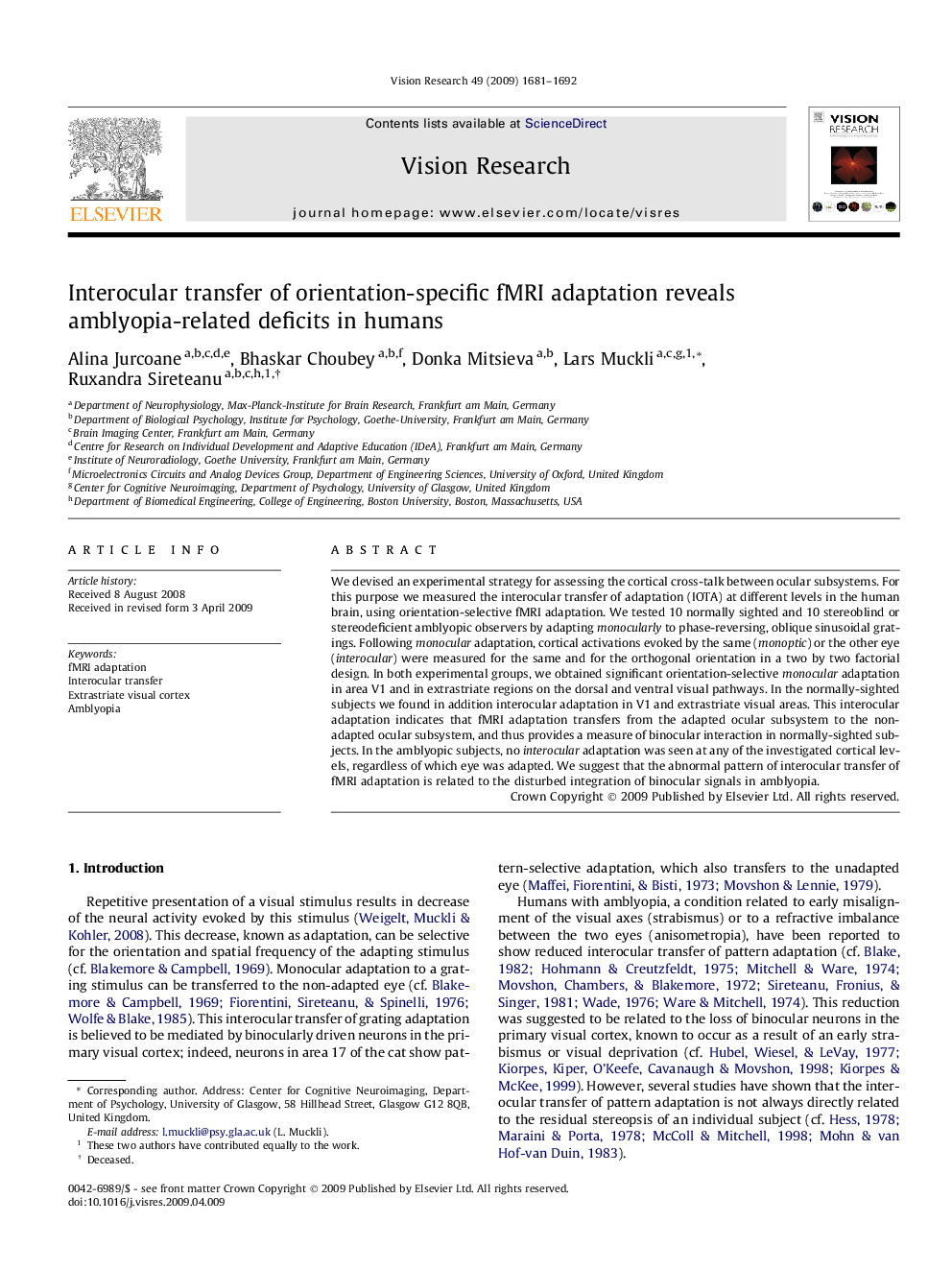| کد مقاله | کد نشریه | سال انتشار | مقاله انگلیسی | نسخه تمام متن |
|---|---|---|---|---|
| 4034721 | 1263476 | 2009 | 12 صفحه PDF | دانلود رایگان |

We devised an experimental strategy for assessing the cortical cross-talk between ocular subsystems. For this purpose we measured the interocular transfer of adaptation (IOTA) at different levels in the human brain, using orientation-selective fMRI adaptation. We tested 10 normally sighted and 10 stereoblind or stereodeficient amblyopic observers by adapting monocularly to phase-reversing, oblique sinusoidal gratings. Following monocular adaptation, cortical activations evoked by the same (monoptic) or the other eye (interocular) were measured for the same and for the orthogonal orientation in a two by two factorial design. In both experimental groups, we obtained significant orientation-selective monocular adaptation in area V1 and in extrastriate regions on the dorsal and ventral visual pathways. In the normally-sighted subjects we found in addition interocular adaptation in V1 and extrastriate visual areas. This interocular adaptation indicates that fMRI adaptation transfers from the adapted ocular subsystem to the non-adapted ocular subsystem, and thus provides a measure of binocular interaction in normally-sighted subjects. In the amblyopic subjects, no interocular adaptation was seen at any of the investigated cortical levels, regardless of which eye was adapted. We suggest that the abnormal pattern of interocular transfer of fMRI adaptation is related to the disturbed integration of binocular signals in amblyopia.
Journal: Vision Research - Volume 49, Issue 13, July 2009, Pages 1681–1692